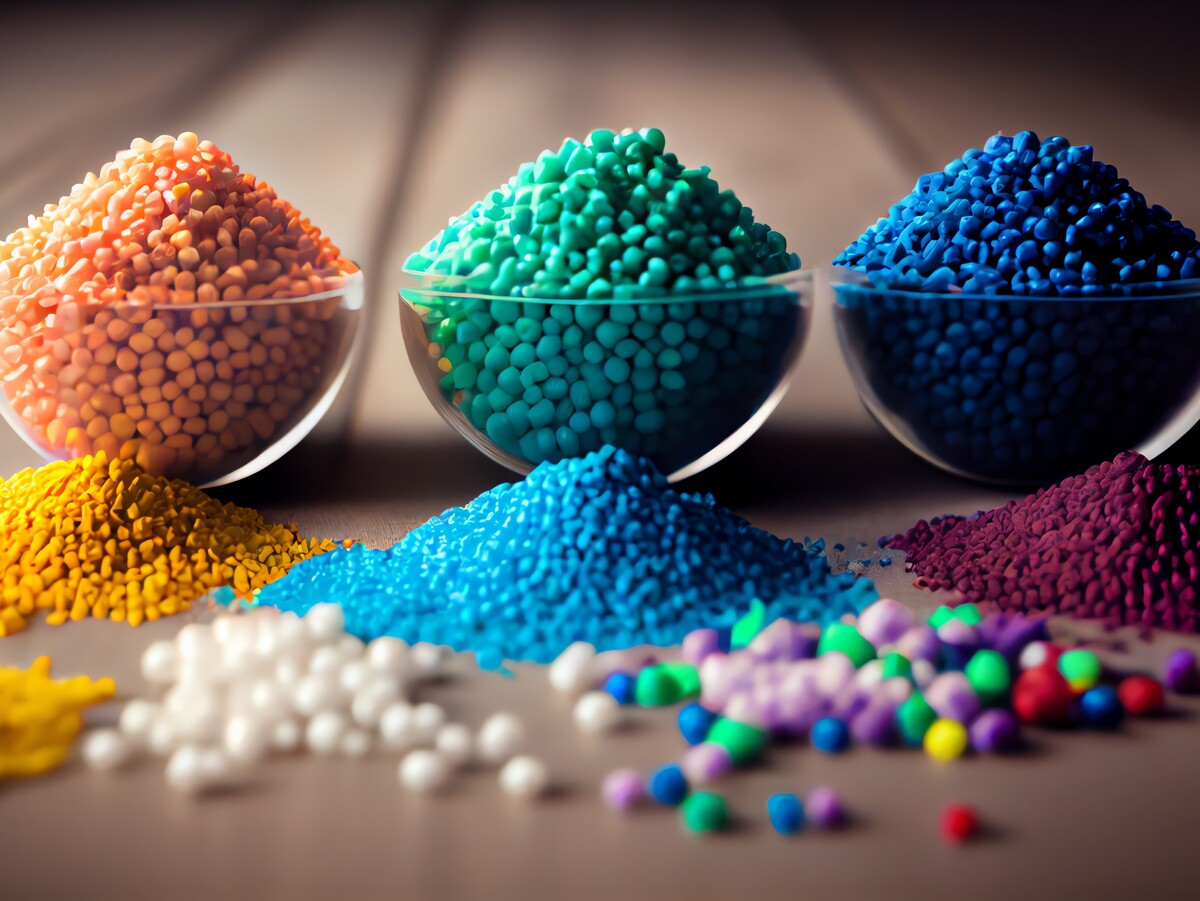The problem with bioplastics
As plastic waste continues to engulf the planet, scientists and researchers are looking for innovative ways to counteract the problem. Bioplastics are often touted as an answer, but do they cause more problems that they solve?

It’s no secret that plastic represents one of the biggest environmental challenges of our time: Its production is resource intensive, and traditionally based on non-renewable fossil fuel streams; after use, the waste generated is choking wildlife; and there’s increasing evidence to show that microplastics and plastics additives are ending up in our bodies.
And yet, the world is producing twice as much plastic as two decades ago, with only 9% of it successfully recycled. In 2021, we created an estimated 390m tonnes of the stuff, and according to the United Nations Environment Programme (Unep), without urgent action the problem is set to more than double by 2030.
Action takes many forms, from finding alternatives to single-use plastics, to bottle recycling schemes and the rise of refill stores, to wider campaigns pressing for stronger circularity in the way materials are managed (learn more about the circular economy here). But for others, the answer lies in bioplastics.
According to industry association European Bioplastics, 2.4m tonnes of bioplastic was produced in 2021. This represents less than 2% of global plastic production, but it’s a growing sector – one that’s expected to triple by 2026.
Indeed, the very name ‘bioplastic’ hints at eco-friendliness – but does this material really represent a solution to the mounting plastics problem?
What is bioplastic?
Bioplastics are touted as an environmentally-friendly alternative to regular plastic because they’re made from plant or biological material instead of non-renewable petroleum feedstocks. But there’s some confusion around the term, as it can be used to describe two separate types of material.
- ‘Bio-based’ plastic is made (at least partly) from biological matter; while
- ’Biodegradable plastic’ can be completely broken down by microbes within specific conditions.
Not all bio-based plastics are biodegradable, and not all biodegradable plastics are bio-based.
To complicate things further, the term ‘compostable’ is often used when talking about biodegradable plastic, but while all compostable items are biodegradable, not all biodegradable items are compostable.
Compostable usually refers to something that is bio-based – that is, made from biological matter. This isn’t always the case for biodegradable products, as the term ‘biodegradable’ means the item or product will biodegrade at some point in time, whether that’s five or 5,000 years from now.
The EU standard, EN 13432, in the EU Packaging Directive, gives some guidance. For a bioplastic to be classed as compostable it must fully disintegrate within 12 weeks. For a bioplastic to be classed as biodegradable, it’s six months. But this can only happen if certain conditions are met regarding temperature, humidity, oxygen levels and presence of microorganisms or fungi.
How are bio-based plastics made?
Generally, commercial bio-based material is made in one of two ways:
-
by extracting sugar from plants like corn and sugarcane to convert into polylactic acids (PLAs), that can then be polymerised into plastics; or
-
from polyhydroxyalkanoates (PHAs) engineered from microorganisms.
PLA plastic often comes from large industrial facilities that make products such as ethanol, so it’s the cheapest and most common form of bioplastic (although still far more expensive than traditional petroleum-based plastic), and is typically used in food packaging. PHA, on the other hand, is often used in medical devices like sutures and cardiovascular patches.
How is it discarded?
Depending on what it’s made from, bioplastic material is either sent to landfill, recycled like traditional plastic, or, preferably, sent to industrial composting sites. Industrial composting heats the bioplastic to a high temperature which enables microbes to break it down. Without this intense heat, bioplastics won’t break down within a meaningful timeframe, which means if they end up in a marine environment they’ll function just like regular plastic, breaking down into micro-sized pieces and lasting for decades.
Crucially, none of the standards for plastics labelled as biodegradable or compostable make them suitable for disposal in the open environment. So chucking them on a compost heap or leaving them exposed to the elements will have the same outcome as traditional plastic.

The argument for bioplastics
The biggest draw of bioplastic is that it uses more renewable resources (biological material – or biomass – which can be replenished) in its production, instead of fossil fuels, and is therefore responsible for fewer carbon emissions. Bioplastic will release carbon upon disposal, but only the carbon that the biological matter sequestered while it was growing.
A number of studies support this argument, with one indicating that switching all US plastics to corn or grass-based products would cut the industry’s greenhouse gas (GHG) emissions by 25%. Advocates also argue that since biomass is renewable, it can be grown all over the world and support agrarian economies. This contrasts with fossil fuel feedstocks like oil and gas, which tend to be concentrated in localised areas and owned by large multinationals or governments.
The biggest potential area of impact for bioplastic is in the food industry. Packaging food items in bioplastic means that the packaging material and any residual food or liquid stuck to it could – in theory – be composted altogether. At present, a lot of food packaging waste is sent to landfill as it is unsuitable for recycling because it is contaminated with food. So, in theory, composting bioplastics might reduce the amount of plastic and food waste being sent to landfill However, this is only feasible if materials are properly sorted and can be industrially composted, and as we’ll see below, this isn’t always the case.
The argument against bioplastics
While it may be the case that bioplastic has an overall lower GHG footprint than its petroleum-based counterpart, it comes with a number of additional environmental considerations.
Firstly, a large volume of crops, land and water is needed to make bioplastic. As one study indicates, making just one tonne of PLA requires 2.39 tonnes of maize, 0.37 hectares of land and 2.9m litres of water. While these resources could, technically, be sourced anywhere, the vast majority will come from developing nations which are already facing increased loss of natural habitats, pollution, conflicts of land and food and water shortages. One of the biggest arguments from critics of bioplastics (and, similarly, biofuels) is that growing biomass depletes the land available to grow food, and with the global population set to hit 10 billion in the coming decades, food insecurity is a deepening challenge.
Then there are issues of toxicity. While bioplastic is comprised mainly of ‘natural’ ingredients, it still requires a host of chemicals to create the characteristics (strength, rigidity, and so on) that enable it to perform like regular plastic. The toxicity of these chemicals varies, but one literature review – which examined around 20 scientific papers on the matter – found that bio-based plastics are just as toxic as their petroleum-based counterparts.
But perhaps the biggest challenge around bioplastics is that any inherent benefits can only be realised if the material is disposed of correctly. As evidenced above, the term ‘bioplastic’ is confusing – if not misleading – to consumers, who may mistakenly assume such a product will break down as easily and naturally as banana skins or apple cores.
If bioplastics end up in landfill, without enough oxygen to break them down they can last for decades and release methane, a GHG 30 times more potent than carbon dioxide. If they end up in the general environment or in oceans, they’ll function the same as regular plastic.
This issue is compounded by a global lack of industrial composting facilities equipped to manage these materials, with a growing number of them rejecting bioplastics entirely. There are two reasons for this. Firstly, compostable packaging and bioplastics do not add any valuable nutrients to compost, so these products have a net negative impact on the final product created by these sites. Secondly, consumer confusion around types of plastic and their disposal means a lot of conventional plastic – which can’t be composted – ends up at these sites.
It’s not just consumers, either. The UK Parliament, for example, launched its own dedicated collection for compostable plastics in 2018. But within the scheme’s first seven months, all of the collected material had to be sent for incineration instead because of high levels of contamination from regular plastic.
What are companies doing?
Despite these challenges, a number of major brands continue to explore bioplastics as a means of reducing their environmental impact. Coca-Cola, for example, is pressing on with its PlantBottle initiative, where 30% of each drinks bottle is made from sugar cane and other plants. In 2021 it began experimenting with bottles made from 100% bio-based material.
Mars has tested bio-based chocolate bar wrappers, while coffee brand Lavazza now offers coffee pods that can be (industrially) composted. Meanwhile, UK supermarket Co-op was the first UK retailer to launch certified compostable carrier bags back in 2007, rolling them out to all of its stores in 2021.
Given the many challenges associated with bioplastics, however, greenwashing remains an issue, with critics accusing brands of adopting bioplastics as an easy win instead of doing the more complex and expensive work to tackle the root of the plastics problem. Danone, for example, has been a pioneer in bio-based packaging since 2011, but is now facing legal action from environmental groups for its plastic use and reporting practices.
Is there a role for bioplastics?
Bioplastics are clearly not a panacea to our plastic problems, but that doesn’t mean they can’t play a part in the transition to a greener economy, namely in driving innovation and spurring consumer interest in better environmental behaviour. For example, there is research being conducted on bioplastics made from sugars grown in algae, which would limit the impact on food production, while scientists are working on processes that can make bioplastics more easily compostable.
The reality, however, is that we need to completely rethink our relationship with plastic. According to a report from Pew Charitable Trusts, the only solution to our growing plastics problem is a massive $600bn overhaul of the world’s plastic system that reuses and recycles plastic in a circular economy, along with other, smaller-scale changes – including bioplastics. If its recommendations are adopted, the Pew report says, plastic waste could be reduced by 80% over the next two decades – change on a scale that bioplastics alone will never achieve.
Further reading
|
Activate employees
Find out how OckiPro membership engages employees to deliver sustainability impact.
Get Involved
There are many ways to get involved with Ocki and its community. To find out more, click the button below




